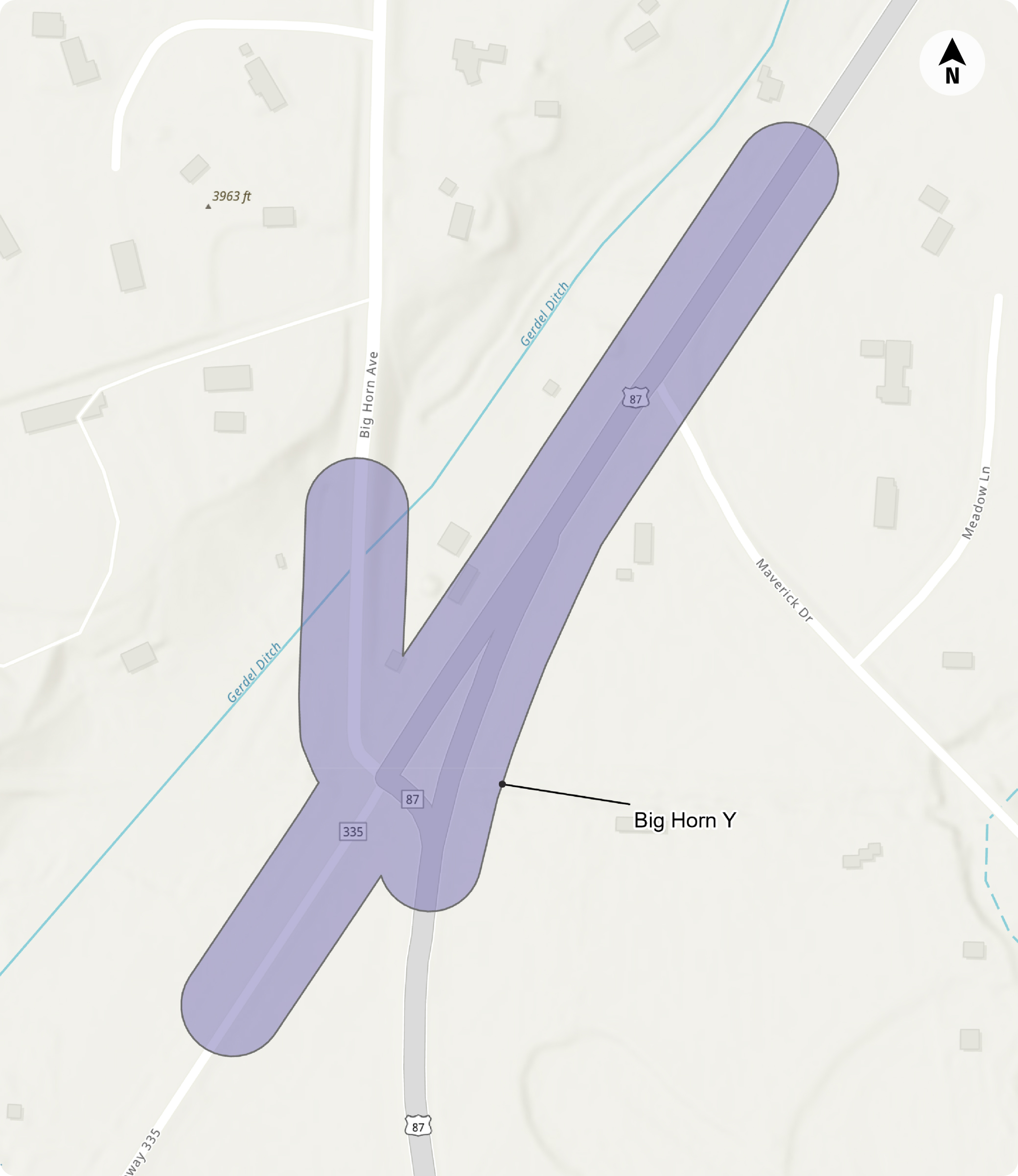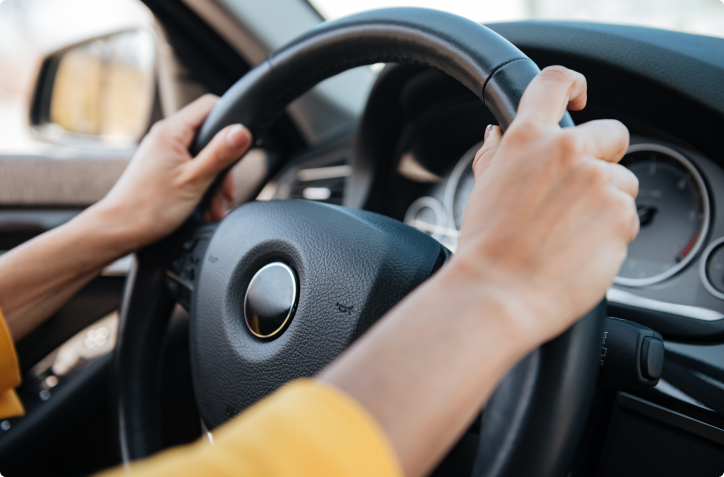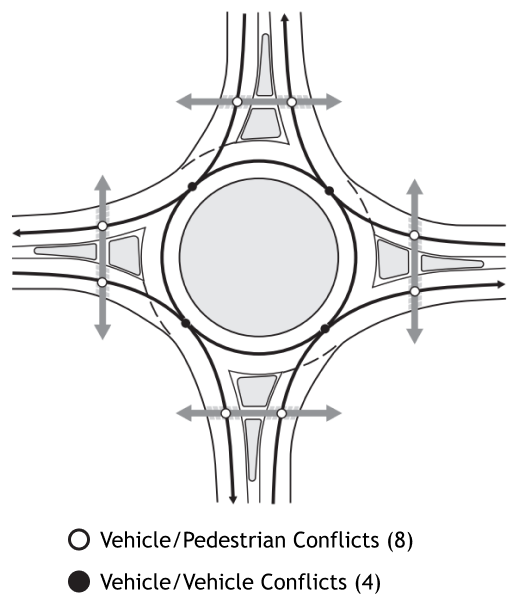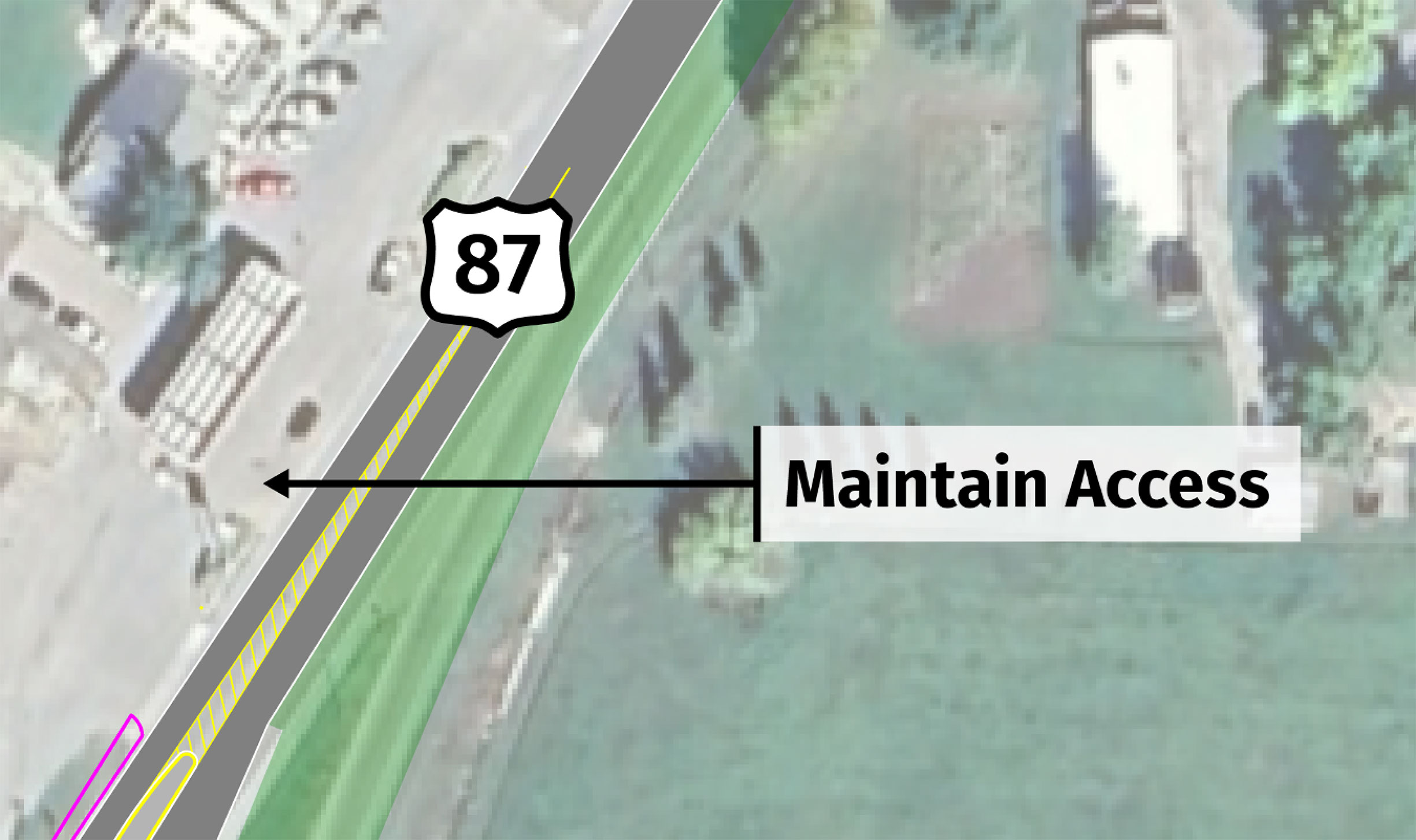Click the arrows at the bottom of your screen to visit each section.
What is the Big Horn Y Intersection Study?
The Wyoming Department of Transportation completed a study of the intersection of US 87, WY 332, and WY 335, also known as the Big Horn Y Intersection.
The study team analyzed the following:
Existing roadway conditions
Traffic volumes
Turning movement counts
Traffic operations
Five-year crash data
Current operations
Forecasted conditions and volumes
Overall functionality of the study area
The final report reviews the existing conditions of the intersection and provides recommendations with the goal of enhancing safety and operations of the intersection.
Project Location in Sheridan County, WY

Project Limits

Meeting Goals
This is the second and final meeting for the US Highway 87 Intersection Study. This unique intersection, also known as the Big Horn Y, is located near Sheridan and presents challenges for commuters, trucks, bicycles, and pedestrians alike.
The goals of this meeting include:
- Share results of what we heard from the public during the first public meeting
- Present intersection alternatives and key findings from planning analyses
- Collect public comments prior to final recommendations

What We’ve Heard So Far
The initial public involvement effort included an online-only public meeting in April 2024. Stakeholders and the public were asked a series of questions about intersection use and operations. Over 200 residents and frequent users of the intersection provided input about challenges and opportunities, and an overwhelming percentage submitted comments related to safety.
Overall Concerns
A majority of survey respondents responded that they were concerned with:
- Speeding and the difference between speeds of vehicles
- Near-miss crashes
- Cars failing to yield and merging ineffectively
- High traffic volumes, especially during peak times
- Long wait times to cross and enter the highway
- Difficulty crossing the highway for bicycles and pedestrians
- Inability to see oncoming traffic

Safety Concerns
How safe do you feel traveling through this intersection?
What are your top concerns about this intersection? Select up to three.
Intersection Improvement Priorities
The public provided ranked priorities for intersection improvements. Priorities from 1 (most important) to 4 (least important) are shown in the graphic to the right.
This survey tells us that the community’s top concern is for the overall safety of the intersection.

How Alternatives Were Developed
The alternatives have been developed based on current conditions, forecasted traffic volumes, safety, driver delay, and public input. As part of the study, many different intersection designs were considered and evaluated. Based on the results of this analysis, the top three alternatives are now available for public comment.
Selection Criteria and Considerations
- Ability to enhance safety with lower predicted crashes
- Driver expectancy
- Future operations and delay
- Decreasing the speed differences between vehicles
- Environmental impacts
- Right-of-way requirements
- Ability to address current intersection concerns
The following alternatives are currently in DRAFT FORM and are subject to change. No alternative has yet been selected. Following this study, a design project will finalize the alignment and precede any planned construction.
How to Read the Alternative Results
Using data and industry best practices, each alternative was scored against each other in a variety of categories. Refer to the legend and notes with each set of results to see how the alternatives compare.

If no changes are made to the intersection, operations and safety of the intersection will continue to decline. This alternative results in longer delay for drivers in the future (2045) and does not address any of the safety concerns noted during the first public input process. The current delay for drivers at the two-way stop is approximately 10-15 seconds per vehicle. If no action is taken, that delay will double in the future (2045) and will be approximately 30 seconds per vehicle.
Alternative Results
-
 Predicted Crash Rates*
Predicted Crash Rates*
-
 Future Delay Rates
Future Delay Rates
-
 Property Impacts
Property Impacts
-
 Truck and Freight Mobility
Truck and Freight Mobility
-
 Addresses Speeding Concerns
Addresses Speeding Concerns
-
 Bicycle and Pedestrian Friendly
* Predicted crash rate higher than roundabout
and all-way stop intersections (Alternative 2
and 3) and lower than a signalized
intersection (not carried forward)
Bicycle and Pedestrian Friendly
* Predicted crash rate higher than roundabout
and all-way stop intersections (Alternative 2
and 3) and lower than a signalized
intersection (not carried forward)
Legend
-
 Baseline for Comparison
Baseline for Comparison
-
 Undesirable Increase
Undesirable Increase
-
 Desirable Decrease
Desirable Decrease
-
 Not Present
Not Present
-
 Present
Present
According to the Federal Highway Administration (FHWA), roundabouts are a proven safety countermeasure that can reduce the number of crashes by decreasing conflict points, lowering speeds, and accommodating pedestrian and bicycle movements. The roundabout option lowers the delay for drivers at the intersection both today and in the future (2045) to less than 10 seconds per vehicle.

Benefits:
- The potential for serious injury and fatal crashes are reduced by 90% and head-on crashes are eliminated.
- Slower approach speeds for traffic.
- Allows for bike and pedestrian crossing.
- Curved approaches guide traffic so oncoming traffic only comes from one direction.
- Trucks and trailers can be accommodated.
- Driver delay is the lowest with this alternative.
- Does not require on-going maintenance like a traffic signal would.
Considerations:
- Roundabouts may be unfamiliar to new users, but single-lane roundabouts are easily learned.
- Right-of-way acquisition is required, however, all intersection improvements alternatives that realign the intersection will require some additional space.
Alternative Results
-
 Predicted Crash Rates*
Predicted Crash Rates*
-
 Future Delay Rates**
Future Delay Rates**
-
 Property Impacts
Property Impacts
-
 Truck and Freight Mobility
Truck and Freight Mobility
-
 Addresses Speeding Concerns
Addresses Speeding Concerns
-
 Bicycle and Pedestrian Friendly
*Lowest predicted crash rate of all
alternatives.
**Lowest future delay rate of all
alternatives.
Bicycle and Pedestrian Friendly
*Lowest predicted crash rate of all
alternatives.
**Lowest future delay rate of all
alternatives.
Legend
-
 Baseline for Comparison
Baseline for Comparison
-
 Undesirable Increase
Undesirable Increase
-
 Desirable Decrease
Desirable Decrease
-
 Not Present
Not Present
-
 Present
Present
All-way stop controlled intersections are suited for low to moderate traffic volume intersections serving motorized and non-motorized trips. In stopping all vehicles, safety of crossings is prioritized over the speed at which vehicles are allowed to travel. Slower speeds going through an all-way stop control intersection reduces the likelihood of fatalities and severe injury crashes.

Benefits:
- Provides bike and pedestrian crossing.
- Reduces the speed of vehicles traveling through the intersection.
- Eliminates yielding and merge issues at existing merge point.
- Does not require on-going maintenance of a traffic signal.
- Reduces crashes by 48% compared to a two-way stop controlled intersection.
Considerations:
- Visibility for side-mounted stop signs on multi-lane facilities needs to be addressed; however, additional mitigation measures can be added to increase visibility such as advanced rumble strips, advanced signing, and LED stop signs.
- Individual vehicle delay may be greater.
Alternative Results
-
 Predicted Crash Rates*
Predicted Crash Rates*
-
 Future Delay Rates**
Future Delay Rates**
-
 Property Impacts
Property Impacts
-
 Truck and Freight Mobility
Truck and Freight Mobility
-
 Addresses Speeding Concerns
Addresses Speeding Concerns
-
 Bicycle and Pedestrian Friendly
*Predicted crash rates slightly higher than
roundabout (Alternative 2) but lower than
existing conditions (Alternative 1).
**Future delay rate higher than roundabout
(Alternative 2) and lower than existing
conditions (Alternative 1).
Bicycle and Pedestrian Friendly
*Predicted crash rates slightly higher than
roundabout (Alternative 2) but lower than
existing conditions (Alternative 1).
**Future delay rate higher than roundabout
(Alternative 2) and lower than existing
conditions (Alternative 1).
Legend
-
 Baseline for Comparison
Baseline for Comparison
-
 Undesirable Increase
Undesirable Increase
-
 Desirable Decrease
Desirable Decrease
-
 Not Present
Not Present
-
 Present
Present
This alternative is not being carried forward as the traffic volumes are not high enough to meet signal warrants.
According to the FHWA, traffic signals can help keep traffic moving smoothly. Traffic signals can help conflicting traffic streams share the same intersection, which can increase the number of vehicles an intersection can handle. While there are benefits for this alternative, the traffic volumes at this intersection are lower than the traffic signal warrants recommended by the MUTCD (Manual on Uniform Traffic Control Devices).
Benefits:
- Provides information to drivers with overhead traffic signals to direct traffic and provide for turn movements at the intersection.
- Provides bicycle and pedestrian crossing.
Considerations:
- The intersection does not meet signal warrants.
- Traffic signals have more conflict points than other alternatives, resulting in a higher predicted crash rate.
- Less delay for drivers than no-build, but more than roundabout and all-way stop.
- Increased delays for east and west movements.
Alternative Results
-
 Predicted Crash Rates*
Predicted Crash Rates*
-
 Future Delay Rates**
Future Delay Rates**
-
 Property Impacts
Property Impacts
-
 Truck and Freight Mobility
Truck and Freight Mobility
-
 Addresses Speeding Concerns
Addresses Speeding Concerns
-
 Bicycle and Pedestrian Friendly
*Predicted crash rate is similar to
existing conditions (Alternative 1) and
higher than all other alternatives.
**Future delay rate similar to existing
conditions (Alternative 1) but higher than
all other alternatives.
Bicycle and Pedestrian Friendly
*Predicted crash rate is similar to
existing conditions (Alternative 1) and
higher than all other alternatives.
**Future delay rate similar to existing
conditions (Alternative 1) but higher than
all other alternatives.
Legend
-
 Baseline for Comparison
Baseline for Comparison
-
 Undesirable Increase
Undesirable Increase
-
 Desirable Decrease
Desirable Decrease
-
 Not Present
Not Present
-
 Present
Present
Alternatives FAQ
The roundabout alternative results in less driver delay than a traffic signal and less potential crashes. Conflict points refer to areas where vehicle/pedestrian and vehicle/vehicle crashes may occur due to paths of travel crossing. Additionally, crashes that occur in roundabouts are typically less severe than those that occur at a traffic signal. Roundabouts have significantly fewer conflict points, as shown below.
Four-Way Intersections
Four-way intersections have a high number of conflict points, as shown below.

32 Total Conflicts
Roundabouts
Roundabouts have significantly fewer conflict points, as shown below.

12 Total Conflicts
Source: https://www.fhwa.dot.gov/publications/research/safety/00067/000675.pdf
WYDOT studied a full range of traditional and innovative intersection solutions. They were ranked based on their safety, traffic operations, and driver expectancy. Those that did not rank highly in these categories were eliminated from further study.
Yes, trucks and trailers can travel through roundabouts.

Access to the Big Horn Y Gas Station will be maintained, and specific access modifications would be determined during the design phase.

Survey
Thank you for taking the time to review the information in this meeting. This survey is now closed.
